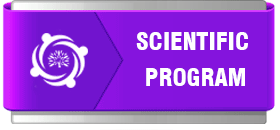
Shwufen Wang
National Taiwan University, School of Physical Therapy, Taiwan
Title: Decrease of Range of Motion in Hip rotation in Patients with Unilateral Low Back Pain
Biography
Biography: Shwufen Wang
Abstract
Chronic low back pain is high prevalent and become economic burden in the modern society. The current model of pain managemnt adapted a bio-psycho-social concept to understand the possible mechanism, and generating novel intervention. Tradition anatomy of muscular skeletal system focuses on the morphology of individual muscles and joints. However, the concept of bio-psycho-social model challenges the traditional concept. The net-work concept of the bio-psycho-social system provides the possibility of interaction among systems. The concet of biotensegrity connecting by fascia network provides a paradygmn shift in viewing the human body. We thus hypothese that patients with chronic unilateral low back pain, with possible imbalance tension in the myofascial network of the low back will result in asymmetrical movement of adjacent hip joint in three dimentaion, particularly in rotation. The purpose of this investigation is to compare the hip rotation in patients with unilatral low back pain and asymptomatic control. 19 patietns with unilatral low back pain and 24 asymptomatic participants were recruited. The exclusion criteria are leg length descrepency, and scoliosis. The hip rotation was measured in prone position with the knee in flexion position for both legs. The repetitive ANOVA (group*side* rotation) was run. The result showed interaction between side and rotation. The left side has significantly less internal rotation. The significant group effect showed the patients has significantly less rotation in internal and external of both legs. For both patients and asymptomaitc participants, left interal rotation is more limited than the right side. The results indicated that the limition of the hip rotation in both internal and exteranl direction in both legs in patients with unilateral low back pain, and support the net-work concept of muscular skeletal system, while pain in the low back related to adajecent hip joints in rotation bilaterally.

